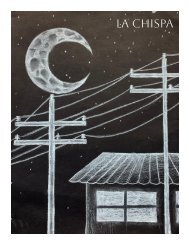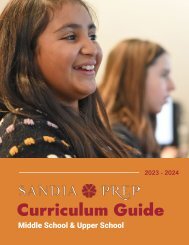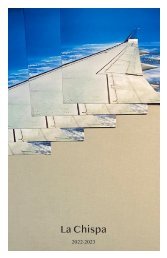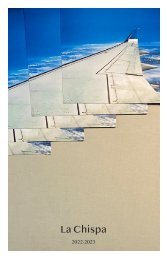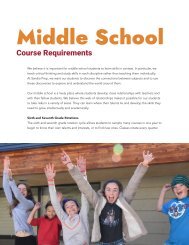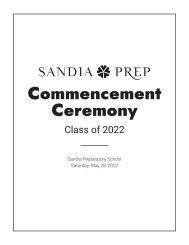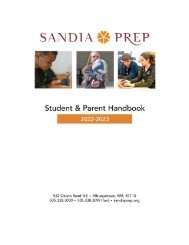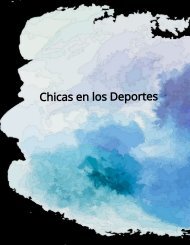Sandia Prep Curriculum Guide 2017-2018
Detailed middle school and upper school 2017-2018 curriculum guide
Detailed middle school and upper school 2017-2018 curriculum guide
Create successful ePaper yourself
Turn your PDF publications into a flip-book with our unique Google optimized e-Paper software.
structures inside cells. The class expands<br />
to explore biomes and their respective<br />
climates and biota. In the spring, the focus<br />
shifts to reproduction, genetics, and the<br />
human body, and the factors that keep it<br />
healthy. Seventh grade students organize a<br />
community-wide blood drive as part of this<br />
effort.<br />
Science 8 - Physical Science<br />
Physical science focuses on the<br />
fundamentals of both chemistry and<br />
physics. In the chemistry section, students<br />
examine the properties of matter, atomic<br />
structure, the periodic table, chemical<br />
bonding, and chemical reactions. These<br />
concepts are then applied during numerous<br />
labs, including but not limited to,<br />
observing periodic trends within elements<br />
and how new chemicals are formed during<br />
chemical reactions. In the physics section,<br />
students examine forces, motion, energy,<br />
simple machines, and waves, including<br />
sound and light. Students perform a variety<br />
of labs utilizing speed as a predictive tool,<br />
observing how work and force change<br />
through various simple machines, and<br />
studying pressure through the creation of<br />
“shoes” to walk on eggs. At the end of the<br />
year, students are prepared to move into<br />
high school science classes.<br />
Geology 1<br />
Grade 9<br />
It would be unforgivable to not teach<br />
geology in New Mexico. This is a year-long<br />
lab science class focusing on the study of<br />
the Earth’s dynamic processes and systems<br />
through topics including plate tectonics,<br />
the rock cycle, minerals, volcanology,<br />
22<br />
seismology, geologic time, paleontology,<br />
and mapping. Students are immersed in both<br />
global and New Mexico geology, including<br />
fieldwork at the Albuquerque volcanoes<br />
(Rio Grande Rift – the third largest rift in the<br />
world) and the Ojito Wilderness. Students<br />
are actively involved understanding the<br />
application scientific methods, through<br />
lab work, activities, research, notes, and<br />
group projects. Students focus on detailed<br />
observations, accuracy, analyzing, and<br />
problem-solving.<br />
Molecular Biology<br />
Grade 10<br />
Molecular Biology introduces students to<br />
the fundamental processes that apply to all<br />
living organisms. Hands-on laboratory work<br />
is the focus of this class, examining enzyme<br />
reactions, cell structure, cell mitosis and<br />
meiosis, cell respiration and fermentation,<br />
genetics, and heredity, along with an<br />
introduction to organic and biochemistry.<br />
Extensive use of technology includes<br />
microscopy, data-collection technology<br />
with Vernier LabPro, and TI-83 graphing<br />
calculators. Students learn the basics of<br />
biology while concentrating on the scientific<br />
method, proper lab technique, data analysis,<br />
and critical thinking skills.<br />
Ecological Biology<br />
Grade 10<br />
Ecological Biology introduces students to the<br />
broad spectrum of macrobiology topics as<br />
they seek to answer the question of “What is<br />
life?”, through the study of the fundamental<br />
concepts of life and life processes, including<br />
fundamentals of ecology (energy flow<br />
and natural cycles, levels of organization,



